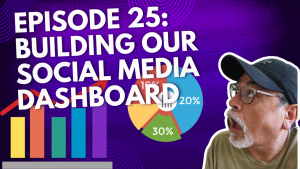AI bias is no longer theoretical, it’s on trial. Federal courts are now hearing ageism class actions and hiring discrimination suits tied to algorithmic hiring platforms, chief among them the Workday litigation. After years of developing AI-driven candidate screening, founders and HR leaders must reexamine how vendor agreements and internal hiring policies must adapt. The Workday case signals a turning point in the AI ageism era of hiring discrimination lawsuits. In the sections that follow, we’ll unpack the dynamics at play, and offer a practical risk-mitigation checklist for founders rolling out scoring algorithms.

AI Bias Meets Ageism Lawsuits
Workday’s AI-powered hiring tools are currently under federal scrutiny. On May 16, 2025, a U.S. District Court judge in Northern California allowed an ageism collective action suit filed by Derek Mobley, a job applicant over 40, to proceed. The court ruled that Workday’s systems—used to score, sort, rank, or screen applicants, could be evaluated under the Age Discrimination in Employment Act (ADEA) using a disparate impact standard.
This lawsuit is emblematic of the collision between AI bias and ageism in hiring decisions. Claims of hiring discrimination, whether intentional or due to biased outcomes, are now sufficient to form a class or collective action. Judge Lin’s approval of nationwide certification hinged on the idea that disparate impact need not prove intent, only that a uniform policy (Workday’s algorithm) disproportionately affects applicants over 40.
Why the Workday Litigation Matters for Vendors and HR
The lawsuit’s core allegation, that Workday’s AI tools systematically disadvantage older candidates, is symptomatic of a broader concern: AI bias embedded in hiring software. Vendors like Workday may face direct liability if their tools are essential to employment decisions, even if not the formal employer.
Companies that incorporate AI into hiring must prepare for ripple effects:
- Vendor accountability: Following this case, software providers risk claims under laws like ADEA and Title VII if their tools produce disparate impact, even unintentionally.
- Stricter contract terms: Organizations must audit vendor-believe mechanisms and include contractual clauses—like indemnity and audit rights—to manage ageism and hiring discrimination risk.
- Proactive compliance shifts: Businesses will need to conduct bias testing and algorithmic audits as part of standard HR policy—a growing requirement under frameworks like EEOC guidance and emerging state AI laws.
The Regulatory and Legal Landscape on AI Bias
Federal and state regulators are watching algorithmic hiring closely. The EEOC filed a brief encouraging the Workday suit to proceed, arguing that algorithmic tools can act as employment agencies and must be scrutinized as such. That aligns with broader trends in safeguarding against hiring discrimination.
Elsewhere, algorithmic audits are gaining buy-in as a proven bias-mitigation mechanism. A report from Brookings details best practices, such as representative sampling, independent audits, subgroup testing, and documentation reviews, offered as a pathway to reduce disparate impact risk.
Globally, legislators are acting too. California’s AI Civil Rights Initiative mandates bias testing in automated decision tools. New York City is considering rules governing AI-based employment screening. Founders must stay on top of multiple jurisdictions when deploying hiring systems.
Risk-Mitigation Checklist for Founders Integrating Scoring Algorithms
The ecosystem shift makes risk planning essential. Founders deploying algorithmic hiring systems should consider this comprehensive checklist:
Vendor Due Diligence & Contract Negotiation
- Explicit anti-bias clauses: Require vendors to warrant tools are tested for disparate impact against protected groups related to ageism and hiring discrimination.
- Audit & oversight rights: Secure the right to regular reviews, independent audits, and model retraining assessments.
- Indemnification protections: Ensure vendor obligations to cover liabilities from ageism and hiring discrimination claims.
Algorithmic Auditing & Bias Testing
- Routine subgroup testing: Analyze outcomes across age groups ([“40+”] et al.), race, gender, report metrics like disparate impact ratios.
- Representative feedback loops: Use diverse test data and human review panels to detect edge-case bias.
- Documentation diligence: Maintain logs of decision criteria, model versions, and audit outcomes; mirror Brookings’ strong standards.
Human Oversight in Hiring Processes
- Human-in-the-loop design: Ensure final decisions involve qualified HR review, especially when candidate scores hover near thresholds.
- Transparent appeal procedures: Allow candidates to request reconsideration, exposing bias errors early.
Internal Governance & Training
- Staff briefings on AI bias: Train teams on how algorithms can drive unintended ageism and hiring discrimination.
- Policy integration: Embed algorithmic fairness in HR manuals, aligning with EEOC and ADEA guidance.
- Board oversight: Regular reporting on algorithmic tools should go to executive leadership and board committees.
Legal Monitoring & Regulatory Readiness
- Ongoing legal counsel: Partner with employment law firms to track lawsuits like Workday’s, assessing changing liability.
- Regulatory sandboxes: Where feasible, test models in controlled environments before full deployment.
- Cross-jurisdiction compliance: Adapt bias audits per federal ADEA, Title VII, state AI laws (e.g., California), and city ordinances (e.g., NYC) referenced earlier.
Communication & Candidate Engagement
- Bias transparency: Inform candidates about AI tool usage and how their data is assessed.
- Feedback channels: Create mechanisms, email or form, to receive candidate feedback, creating early detection of systematic bias.
- Performance metrics: Track KPIs such as age-group pass rates and appeal outcomes to monitor algorithm health.

Projected Ripple Effects on Vendor Contracts & HR Policy
Founders face several emergent implications:
Contractual Shifts
Vendor agreements will now routinely include audit rights, guarantees against ageism and hiring discrimination, and indemnity instruments. Vendors unable or unwilling to comply may lose market opportunities, particularly among clients with fiduciary duty on fair hiring.
HR Onboarding and Talent Strategy
Renewed algorithm reliance will require revised hiring workflows: embed human oversight, legal validations, and inclusive candidate evaluation early. HR teams will need to partner with compliance to validate bias metrics before roll-out, and monitor bias continually, not just at launch.
Broader Implications for Founders and Tech Startups
This shift heralds systemic change:
- Startup liability exposure: Young companies deploying AI for hiring can face serious class-action risk if bias creeps in. Early investment in audit systems can pay dividends.
- Opportunity for purpose-driven positioning: Firms that can prove intentional fairness and design bias controls may benefit in funding, partnerships, and reputational positioning.
- Evolving investor expectations: As AI bias becomes legal front-page news, founders may face due diligence requests on algorithmic governance from VCs and institutional backers.
Moving Forward
AI bias is no longer confined to academic circles, it’s in courtrooms, boardrooms, and HR workflows. The Workday litigation exemplifies how ageism and hiring discrimination lawsuits targeting algorithmic systems can drive change in vendor contracts and HR policy. For founders pioneering scoring algorithms, the era of “ship it and pray” hiring AI is ending. In its place sits a structured, audit-driven, compliance-oriented approach that safeguards candidates and minimizes legal exposure.
Adopting the risk-mitigation checklist above may help to build trust, gain competitive edge, and prepare your organization for where AI ethics and the law are destined to converge.



































